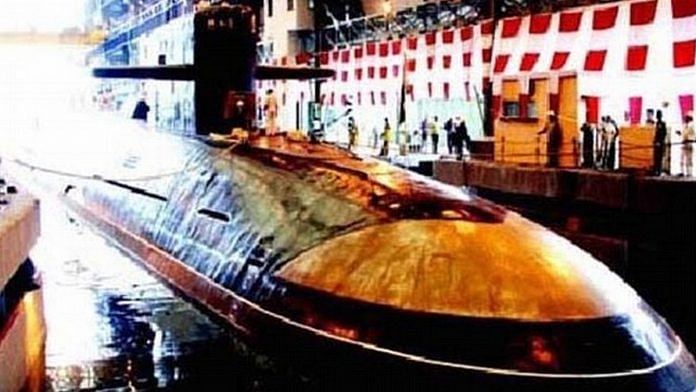
The INS Arihant project began nearly 30 years ago, and has involved private sector companies, Russian advice, and the defence research establishment.
New Delhi: What is the ‘nuclear triad’? It’s nuclear missiles that can be fired from platforms on land, in the air and undersea.
India’s ‘triad’ is a mix of missiles fired from land — the Agni 2, the Agni 4 and the Agni 5. From the air, Sukhoi Su-30MKIs, Mirage 2000s and Jaguars are capable of launching nuclear missiles. The 6,000-tonne INS Arihant now adds a maritime strike capability.
In time, the Arihant will be armed with the Sagarika B-05 missile.
The Arihant project began nearly 30 years ago as the Advanced Technology Vessel (ATV) and has involved private sector companies, Russian advice, and the defence research establishment at the secret Ship Building Centre in Visakhapatnam.
Also read: From ground, air and sea, now India can fire nuclear missiles from anywhere
Why nuclear-specific platforms
The need for platforms specifically for nuclear weapons is not only because they are heavier. The structure of India’s Nuclear Command Authority demands layers of clearances before a decision to strike with a nuclear weapon is taken.
This involves technical knowhow that will involve everyone from the political authority (the Prime Minister) to the one who actually pulls the trigger.
All nuclear weapons and platforms are in the custody of the Strategic Forces Command, a formation involving the Indian Army, Navy and Air Force.
The maritime strike capability has traditionally been seen by the security establishment as the most effective arm to conceal or hide nuclear ability. Nuclear submarines can remain submerged for longer than conventional diesel-electric submarines.
Also read: India’s S-400 advantage: IAF in Delhi can shoot down Pakistani missile near Amritsar
In India’s neighbourhood, only China has nuclear submarine capability — a platform it has also deployed in the past for “counter piracy patrols” off the east coast of Africa. The deployment has befuddled Indians and Americans alike.
US nuclear submarines of the Los Angeles class are known to sail close to India with the US Pacific Command’s fleets (usually the fifth and the seventh) and have visited India for exercises with the Indian Navy.
India has got substantial help from Russian engineers to miniaturise the reactor that powers the Arihant.

COMMENTS